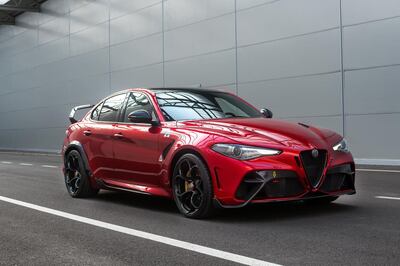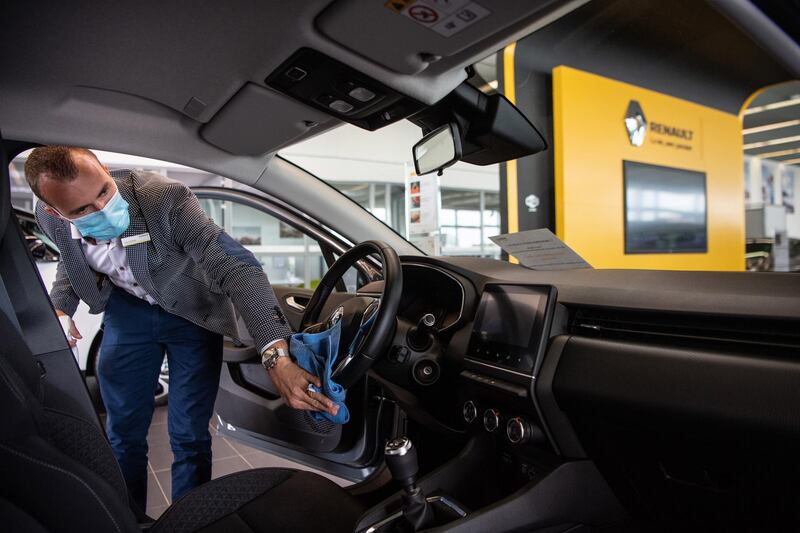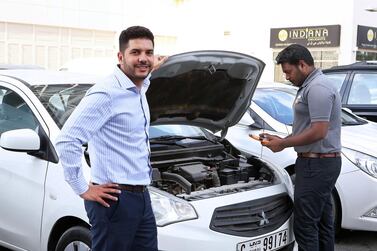The coronavirus pandemic has added to the uncertainty and anguish many of us already had about job security and the state of the economy. In this climate, where the return on every dirham spent needs to be carefully weighed up, car shoppers – those who are still out there – are looking more closely at the value equation, rather than being swayed solely by their emotions.
Depreciation: 'The silent thief'
It’s no secret that the biggest depreciation hit to a new car – barring a major accident – occurs the moment it’s driven out of the showroom. Depreciation is sometimes referred to as “the silent thief”, as it eats away at the value of your car over time. There’s a general rule of thumb that suggests cars lose 20 to 30 per cent of their new value in the first year, and 10 per cent per year thereafter, but this varies greatly depending on mileage, condition and the make and model of the car.
The depreciation curve has been further exacerbated under the gloom cast by Covid-19, with car dealerships dishing up attractive incentives in an attempt to reignite sales in a virtually stagnant market. There are also distress sales on offer from private sellers who have lost their jobs but still have bills to pay and, potentially, loans to service. With movement restrictions in the UAE now appreciably eased, there’s nothing to prevent you from perusing the stock at one of the many used-car dealerships – most of which are open for business – or checking out a privately advertised car on one of the many online used-car platforms.
In regular times, there are a number of factors that affect a car’s value. For example, a vehicle that’s covered 40,000 kilometres after two years will obviously be worth less than a similar example that’s done half the mileage over the same duration. The same goes for a vehicle with an incomplete service history versus a car that’s backed by a solid maintenance record.
Another factor that has a significant bearing on resale value is if the car has been superseded by a replacement model, especially if it’s an all-new generation that represents a major advance over the former. It’s important to research whether a successor model is imminent whenever you’re shopping for a new or near-new vehicle, but it’s not particularly relevant if you’re looking at older or classic vehicles as they’ve already been replaced in the market by newer generations (perhaps many times over).
Be careful when choosing your model
It’s also important to note that certain marques and models tend to hold their value better than others. For example, a three-year-old Toyota LandCruiser or Mercedes C-Class can typically recoup about 60 to 70 per cent of its new purchase price – provided the vehicle has been well maintained and doesn’t have above-average mileage on the odometer. On the other hand, there are the “depreciation disasters”, where resale values sink like a stone. In some cases, this is down to a perception of unreliability or expensive maintenance bills for the make or model in question.
In the past, Alfa Romeos have had a reputation for being notoriously temperamental and alarmingly rust-prone. This is an area the company has addressed in recent years, but that old perception still lingers in the minds of many, which might help explain why the Italian marque’s offerings don’t have especially good residual values.

This may not be pleasant reading if you bought one new, but it’s potentially great news for those in the market for a second-hand Alfa. For example, a quick scan of the classifieds revealed a two-year-old, low-mileage Giulia Quadrifoglio being offered at 40 per cent below the new price – with a little bargaining likely to further reduce the asking price.
Jaguars also don’t fare particularly well in terms of residual values and, again, this is largely down to the brand’s past reputation when it was under the stewardship of British Leyland. During this era, build quality ranged from appalling to mediocre, but this aspect improved dramatically after the company was taken over by Ford in 1990 and Tata Motors in 2008. Even so, it’s now possible save money when buying a used Jag.
Another key trend to note is that cars in the ultra-premium segments tend to drop a big chunk of value in a short space of time. Some examples are the Audi A8, BMW 7 Series, Porsche Panamera and McLaren 650S. None of these cars are cheap to maintain, but there’s nothing inherently wrong with any of them, so they potentially represent decent second-hand buys.
Is it better to buy second-hand?
Overall, when you calculate the total ownership costs, it makes better financial sense to go down the pre-owned route. This view is endorsed by Craig Stevens, chief executive at online automotive sales portal Dubicars.com. "Over the last 12 months, we have been analysing transactional data, and our research shows that the used-car market has surpassed the new-car market," he tells The National.
The new-car market in the UAE has been on the decline for the past four years, he adds. “We can see from RTA data that UAE's vehicle fleet is getting older, and the average age of a car on Dubai roads is eight years. People are holding onto their cars for longer, and we are seeing a real shift in the cars people want to buy.
"There is more willingness to buy a used car, so people can effectively get more car for their money. It is worth noting that even through the worst recessions, there is evidence that demand for used cars remains resilient.”
There is one aberration among used vehicles, however, and that is the niche of collectible cars, which actually gain in value with the passage of time. You’d have every reason to gloat if you had snapped up an air-cooled (pre-1998) Porsche 911 a decade or two ago, as these have soared in value – especially the low-volume Turbo, RS and Clubsport variants. You’ve missed that boat now, but a few affordable future collectibles are the E90/E92 generation BMW M3 (the only V8 model), 2012-13 Ford Mustang Boss 302, Mercedes SL500 (R129 generation) and Porsche 928 (especially the GTS).
Overall, however, by buying a used car it means someone else is taking that depreciation hit, Stevens explains. “You are going to spend less to buy it, extended warranties should shield you from having to buy expensive parts, and the great driving conditions here mean you will likely not have to spend a great deal on maintenance.”







